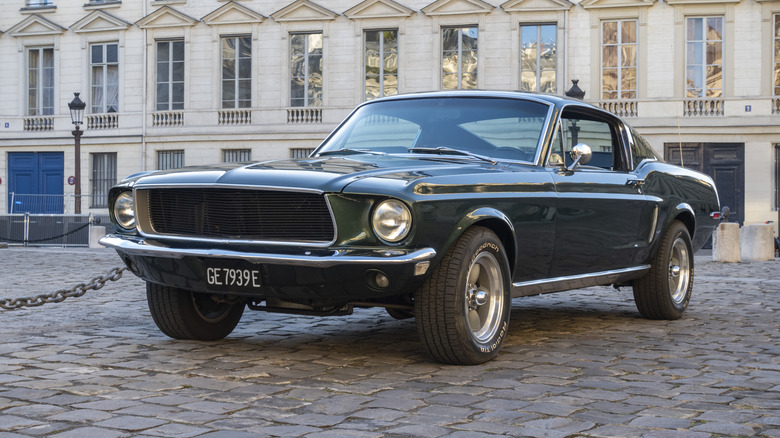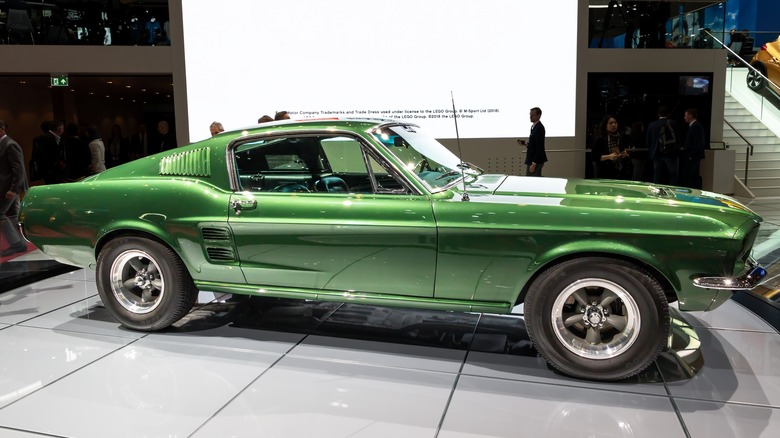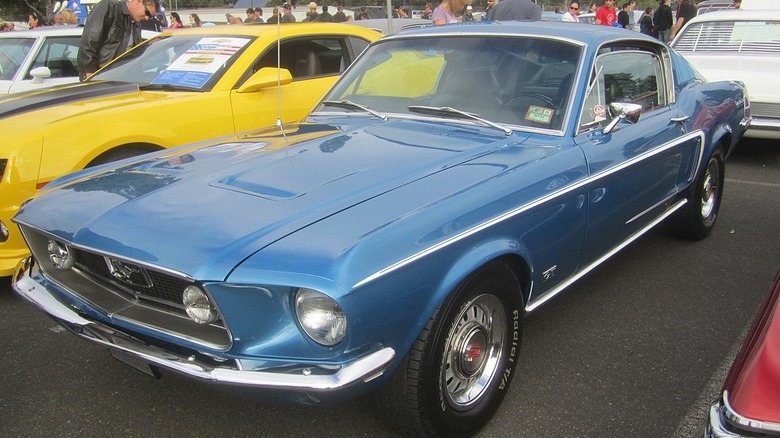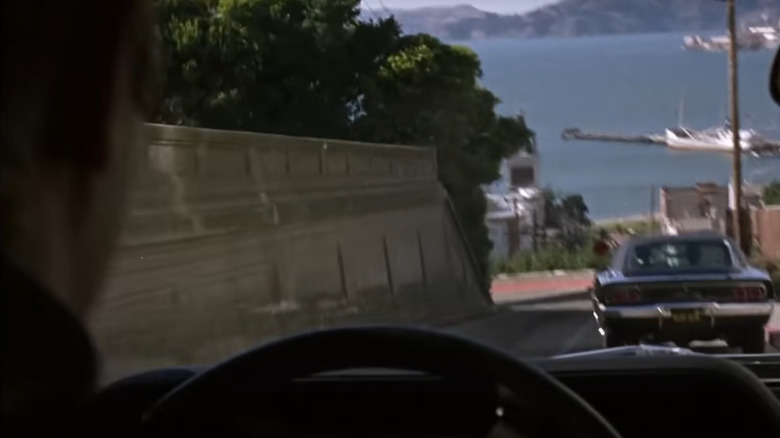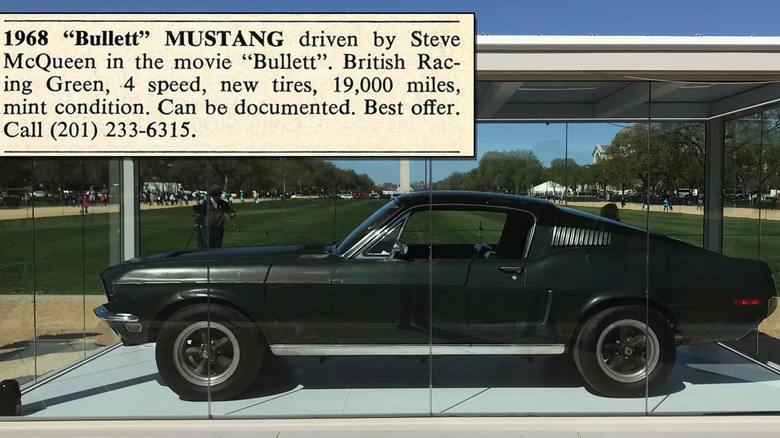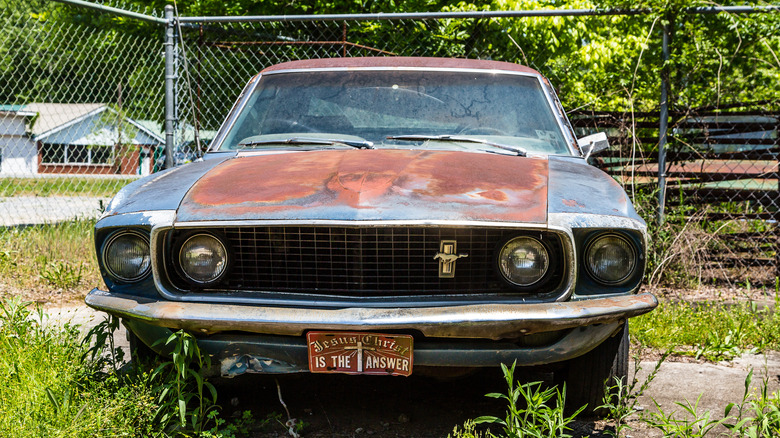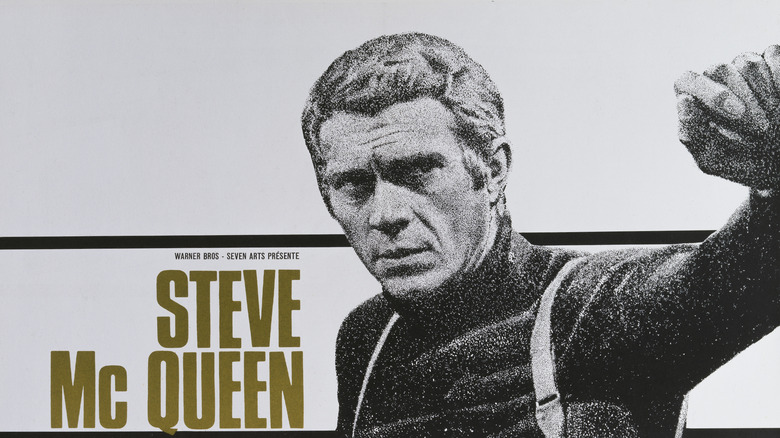6 Facts About Steve McQueen's Iconic 1968 Bullitt Mustang
A well-documented lover of racing in all its forms, actor Steve McQueen might have been a professional racer in another life. "I'm not sure whether I'm an actor who races or a racer who acts," the smoldering symbol of the '60s and '70s once said. The truth is likely somewhere in the middle.
Even while working as an actor, McQueen appeared in several races under the amusing pseudonym Harvey Mushman. And he was no dilletante. He piloted a $4-million Porsche to second place in the 1970 12 Hours of Sebring — while recovering from a broken foot sustained in a motocross race two weeks prior. And it took until the last lap for a Ferrari driven by Mario Andretti to overtake him.
It's only fitting that McQueen's memory should go hand-in-hand with one of the most legendary cars ever to grace the silver screen. Promoting a vehicle via a film has been standard for decades, but few examples are as memorable as McQueen's 1968 turn as police Lt. Frank Bullitt, during which he hurled a Mustang around the streets of San Francisco.
Maybe there was something magical about seeing the actor-cum-racer combine his passions into one glorious orgy of smoking rubber and power slides. The car chase became so iconic that it overshadowed an otherwise forgettable film and created a new Hollywood automotive legend: the Bullitt Mustang. Join us as we look into the car that birthed a million Ford fans and the truth about its fate.
The Bullitt Mustang was a promotional vehicle
The Ford Mustang had changed the landscape of American performance cars a mere handful of years before the filming of "Bullitt." The pony car's release in April of 1964 sparked a previously unknown desire for lightweight American coupes with big V8s.
When "Bullitt" began filming in February 1968, Ford faced stiff competition from General Motors. The generational refresh the Mustang received in 1967 was small potatoes compared to the introduction of the all-new Chevrolet Camaro and Pontiac Firebird. Ford needed to steal some of the limelight back. What better way than to have an authentic racer and leading man whip a Mustang up and down the streets of San Francisco in an epic car chase on movie screens nationwide?
The promotional ploy worked better than anyone imagined. McQueen and the 1968 Mustang became so iconic that the car community immediately dubbed the 1968 Mustang Fastback the "'Bullitt Mustang" and promptly forgot about the rest of the film.
It's hard to say, but fun to imagine how much the Mustang contributed to the success of the ca- chase scene that made it a legend. Would it have made such a huge splash in the psyches of car nuts if Bullitt had piloted a Plymouth Road Runner or Porsche 911? The point is moot because Ford wanted a promotional vehicle, and boy, did it ever get one.
The Bullitt Mustang was a 1968 GT Fastback 390
How did the Bullitt Mustang come to be? After deciding to use a Mustang as Frank Bullitt's vehicle, Warner Bros. ordered a pair of Mustang Fastbacks from Ford. The studio chose the 1968 GT as the base car, then applied some changes to turn it into an on-screen machine.
The GT package automatically included power disc brakes, whitewall nylon tires, and an upgraded cooling package. Buyers could choose between a two- or four-barrel carburetor mounted on the 390-cubic-inch engine. Depending on the setup, the GT could make between 270 and 325 horsepower in its stock version.
The studio added a weathered patina to the signature Dark Highland Green paint even though these were new cars. After applying some scuff to the paint and painting the gas caps black, the Bullitts took on an understated, quasi-menacing appearance suitable to Frank Bullitt's demeanor.
Max Balchowsky, a stuntman and race driver who worked for the studio, modified the Mustangs mechanically with an aftermarket four-speed manual transmission and clutch, and added crossbeam stabilizers in addition to multiple reinforcements to the frame and springs that would help the cars absorb the abuse of the chase scenes. With their mechanical and aesthetic modifications, the Bullitt Mustangs struck a chord with the public — and additionally, there was the cachet of Steve McQueen in the driver's seat.
[Featured image by Sicnag via Wikimedia Commons | Cropped and scaled | CC BY 2.0]
The car-chase scene that broke the Hollywood mold
The cool factor of Max Balchowsky's modifications played a significant role, but the car chase scene itself helped form the Bullitt Mustang's lasting reputation. In the film, Frank Bullitt hops in his Mustang to chase down a bad guy driving a 1968 Dodge Charger R/T.
The ensuing pursuit takes up nearly 11 minutes of screen time in a film less than two hours long. Not only was it one of the longest chase scenes in a movie to date, it was uniquely riveting because of the production's insistence on realism. This included setting up the chase on city streets in San Francisco, including interior points-of-view then underutilized in cinema (some viewers were said to experience motion sickness), and sound design lifted from both recording racing engines and McQueen shifting gears with recording equipment in the cockpit.
The scene starts slowly, building tension for the first minute or two as McQueen subtly tails the Charger through the streets. But around minute three, the baddies in the Charger (with legendary driver Bill Hickman at the wheel) fasten their seatbelts — lap only — and it's on. The screeching tires, realistic traffic, and San Francisco scenery make great fodder for a muscle-car chase.
McQueen insisted that the Mustang's windows be open so that moviegoers could see that he was driving. However, McQueen did not pilot the Mustang for the entire chase. He had help from driver Bud Ekins on the more dangerous stunts.
One of the two originals found a second life as a teacher's commuter car
With only two authentic Bullitt Mustangs ever made, the car's rarity and impact on the culture should have marked it as a valuable collector's item. Today, it would likely be packed up and auctioned off as a piece of mechanical Americana — not so in the '60s.
One original was essentially destroyed in filming and sent to a salvage yard (we'll return to that in a moment), while the production sold the other. The Road & Track classified for the surviving model advertised the "Bullett" Mustang driven by Steve McQueen in mint condition. The price? Best offer.
Bob Kiernan purchased the GT for $6,000 in 1974 and, incredibly, his wife, Robbie, drove it daily to the school where she taught third grade while Bob commuted to his New York City insurance job via train. When Bob's son Sean inherited the most legendary lost car in film history in 2015, it had undergone just a few changes: new carpets and steering wheel, a replaced bumper, and an engine rebuild. For all intents and purposes, it was original right down to the deliberately scuffed Highland Green paint job.
After a detailed verification, the Kiernans' family heirloom proved to be the genuine article. Fans flocked to the 2018 Detroit Auto Show to behold the coming-out of a legend 50 years in the making. In 2020, the Kiernans parted with their heirloom when it sold for $3.74 million at auction.
The other original absconded to Mexico
With the Kiernan family keeping their possession of the Bullitt Mustang close to their chest, it had seemed like the originals were gone — until car-restoration guru Kevin Marti got a phone call in 2017 at his Phoenix-based Ford specialty shop. The caller — a custom-Mustang builder named Ralph Garcia Jr. — wanted to build a clone of the Eleanor Mustang from the "Gone in 60 Seconds" film, and hoped Marti could provide him with a report matching the potential restoration's serial number so he could determine the car's original factory setup.
Marti recognized the serial number — he had memorized it. After asking his caller if he had the car in hand, he kindly informed him about what he was sitting on and recommended Garcia have an expert look it over before he did anything to it. Garcia asked Marti, who promptly booked a ticket for Mexicali, Mexico.
The car was in rough shape because of the impacts from jumps and the general abuse heaped upon it while filming. The busted Mustang even had the old camera mounts attached, but it lacked the drivetrain and interior, and had been painted over more than once. Still, Marti was able to confirm it via that vehicle identification number.
Once Marti confirmed that it was the real deal, Garcia's plans suddenly changed. What was going to be an Eleanor clone for an American customer suddenly turned into the restoration opportunity of a lifetime.
Steve McQueen wanted the car back
Steve McQueen died at age 50 in 1980, but only after he tried to buy the Bullitt Mustang from the Kiernan family. They may have worked hard to keep their secret, but McQueen somehow tracked down the car he had made famous.
In a tersely worded letter sent in 1977, McQueen appealed to Bob Kiernan to sell him the Mustang, telling him that the Mustang was "simply personal with me," and that he would like to keep it in unrestored condition. He even offered to find Kiernan a replacement, "... if there is not too much monies [sic] involved in it. Otherwise, we had better forget it." It's a strong sales pitch if we've ever heard one.
Kiernan resisted McQueen's charmless offer, but he kept the letter, which came to light along with the car when the Kiernans revealed it in 2018. McQueen died just three years after sending his final appeal, without adding the Bullitt Mustang to his impressive, expensive car collection.
